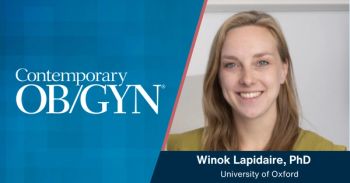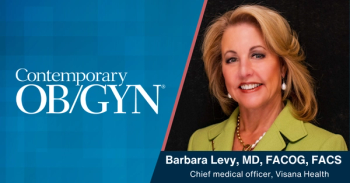
Is endometriosis as tied to infertility as we think?
A new study questions whether the risk of infertility linked to endometriosis is as bad as previously thought.
The risk of infertility associated with endometriosis may not be nearly as high as previously thought, according to results of a new study published in
Researchers at Brigham and Women’s Hospital looked at data collected from 58,427 premenopausal, married female nurses aged <40 years, from 1989 to 2005. The women were participants in the Nurses’ Health Study II prospective cohort. Hazard ratios (HRs) and 95% confidence intervals (CIs) were calculated via multivariate Cox proportional hazards regression models.
In the cohort, they found 4612 incident cases of infertility due to any cause over the course of 362,219 person-years of follow up. When compared to women with no history of endometriosis, those with a history of the condition had an age-adjusted 2-fold increased risk of incident infertility (HR = 2.12, 95% CI = 1.76–2.56). This was attenuated after taking into account parity. A relationship between endometriosis and infertility was only seen among women aged < 35 years (multivariate HR <35 years = 1.77, 95% CI = 1.46–2.14; multivariate HR 35–39 years = 1.20, 95% CI = 0.94–1.53; P-interaction = 0.008). The risk of primary versus secondary infertility was similar following endometriosis diagnosis.
Among women who had primary infertility, 50% became parous after being diagnosed with endometriosis. Among all women with endometriosis, 83% were parous by age 40 years.
The investigators concluded that their results support a temporal link between infertility risk and endometriosis. They believe that the results also indicated a possible detection bias in previous studies examining endometriosis and infertility. They also concluded that the risk of infertility posed by endometriosis may be half what was seen in earlier cross-sectional analyses.
Atrial fibrillation impacts QoL in women
Results of a
Led by researchers from Duke University, the observational cohort included 10,135 patients with AF represented in the nationwide multicenter Outcomes Registry for Better Informed Treatment of Atrial Fibrillation. The individuals (58% male; 42% female) were enrolled at 176 sites between June 2010 and August 2011.
A 20-item validated survey (Atrial Fibrillation Effects on Quality of life [AFEQT]) was used to determine whether symptoms, functional capacity, and QoL differed between men and women with AF. The authors hypothesized that symptoms, QoL, and clinical outcomes would be worse in women. They found, however, that women had lower risk-adjusted all-cause mortality (adjusted hazard ratio 0.57; 95% confidence interval [CI], 0.49-0.67) and rates of cardiovascular death (adjusted hazard ratio, 0.56; CI, 0.44-0.72) but higher risks of stroke of non-central nervous system embolism (adjusted hazard ratio, 1.39; 95% CI, 1.05-1.84; P=.02) compared with men.
Looking at symptoms related to AF, the researchers found that only 32.1% of the women were asymptomatic compared with 42.5% of men (P<.001) and 40% had palpitations versus only 27% of men. Lightheadedness/dizziness and fatigue also were more common in women (both P<.001). Taking antihypertensive medication was not associated with the lightheadedness/dizziness in the women but the authors said that antiarrhythmic drugs were (P=.04).
In terms of QoL, the women had lower scores on the survey and the differences persisted when the analysis was restricted to those aged 75 and older.
Commenting on the findings, the authors said that the QoL scores in women with AF “may be a consequence of both physical and mental consequences of their AF.” They also encouraged use of the AFEQT tool to identify women who may need more aggressive treatment for AF.
Does EPO benefit neurodevelopment in very preterm babies?
Results from a new randomized, double-blind, placebo-controlled, multicenter trial published in
Researchers studied 448 preterm infants in Switzerland from 2005 to 2012. The infants were randomized to receive either rhEPO (3000 IU/kg) or placebo (isotonic saline, 0.9%) intravenously within 3 hours of birth, at 12 to 18 hours following birth, and at 36 to 42 hours after birth. Cognitive development was assessed with the Mental Development index of the Bayley Scales of Infant Development.
Among the 448 infants who were randomized (mean gestational age, 29.0 [range, 26.0-30.9] weeks; 264 [59%] female; mean birth weight, 1210 [range, 490-2290] g), 220 were randomly assigned to be administered the placebo and 228 were selected to receive the rhEPO. Neurodevelopmental outcome data were available for 365 infants, 81%) at an average age of 23.6 months. In an intention-to-treat analysis, the average Mental Development Index showed no statistical difference between the rhEPO group (93.5 [Standard Deviation {SD}, 16.0] [95% CI, 91.2 to 95.8]) and the placebo group (94.5 [SD, 17.8] [95% CI, 90.8 to 98.5]) (difference, −1.0 [95% CI, −4.5 to 2.5]; P = .56). Among secondary outcomes such as cerebral palsy and hearing or visual impairment, no differences were found.
The researchers concluded that a prophylactic early high-dose of rhEPO provides no statistically significant neurodevelopmental benefit for infants born between 26 weeks and 0 days and 31 weeks and 6 days gestation. They did say that get a fuller picture, follow-up is needed on cognitive and physical problems that may not become evident until later in life.
Newsletter
Get the latest clinical updates, case studies, and expert commentary in obstetric and gynecologic care. Sign up now to stay informed.










